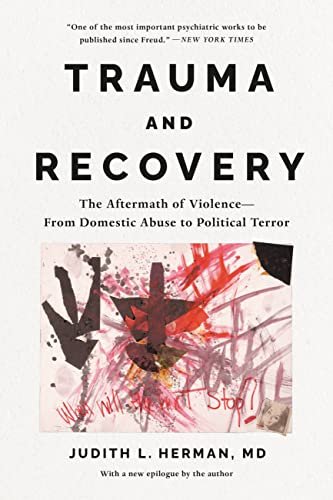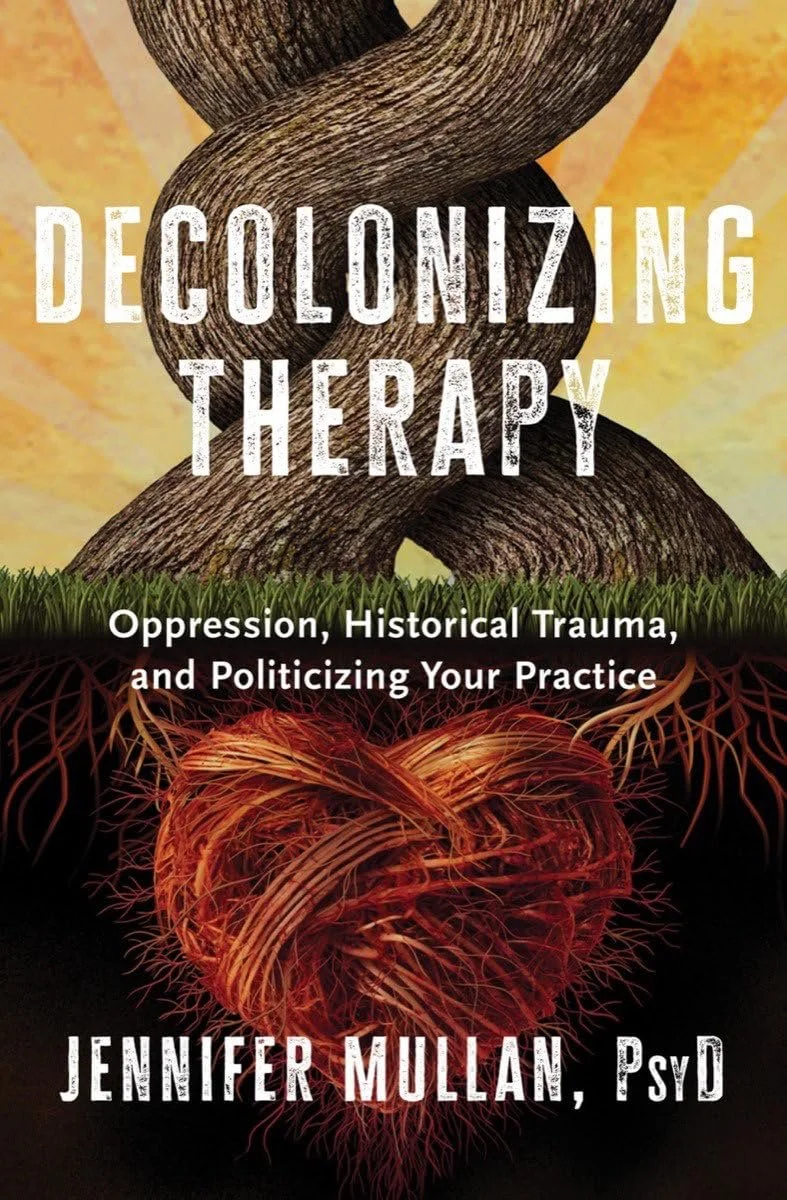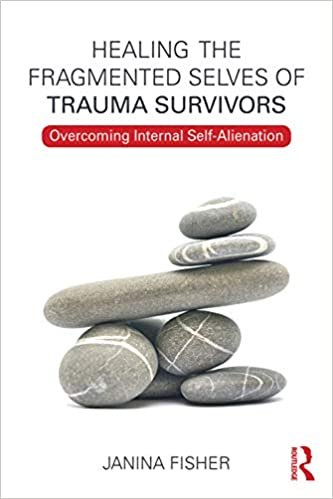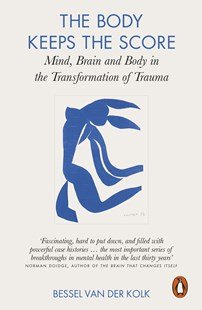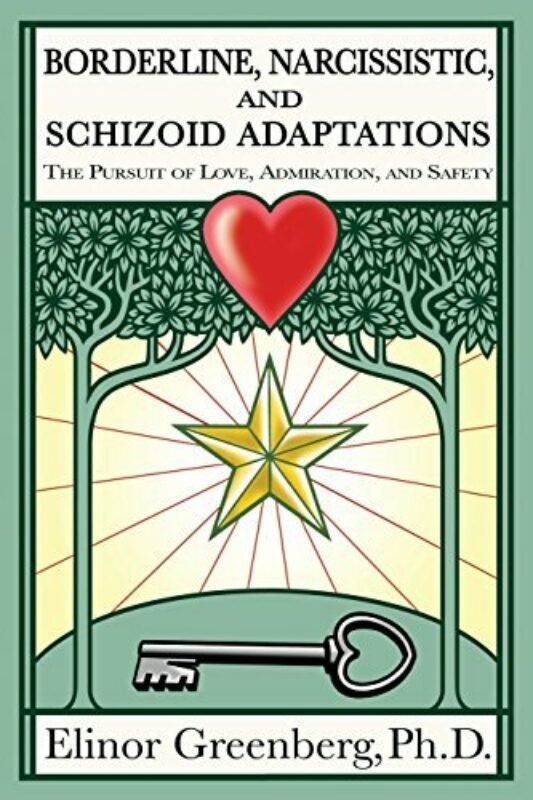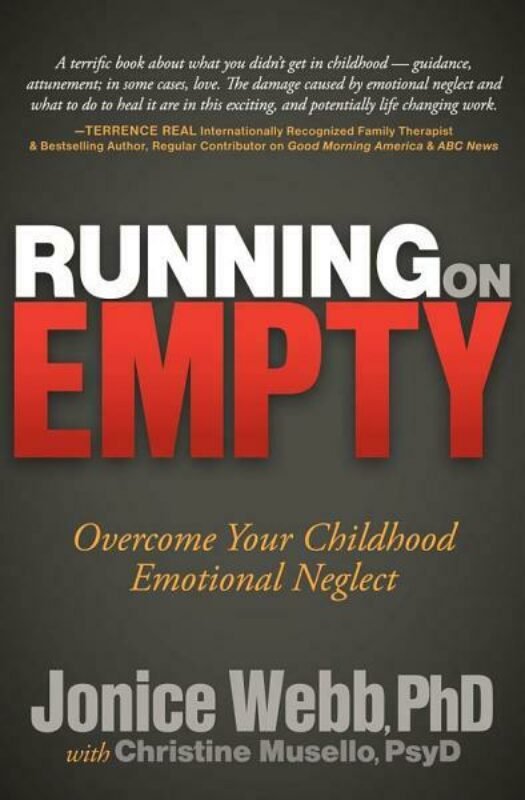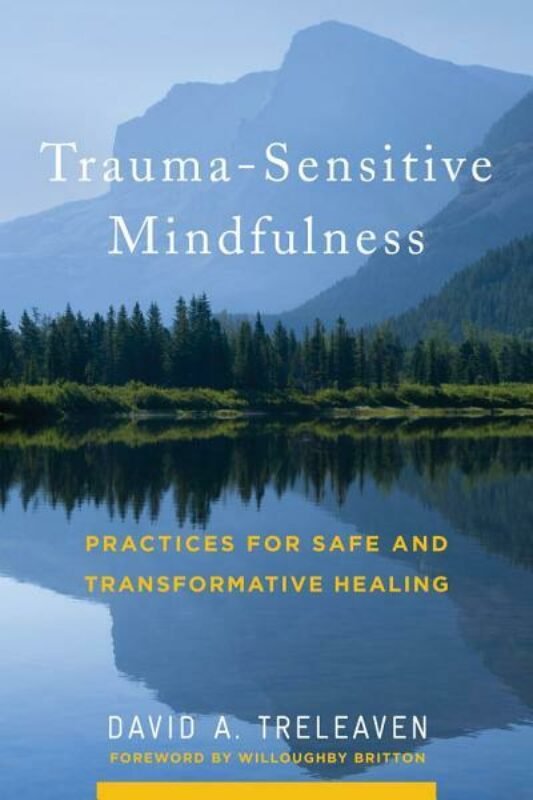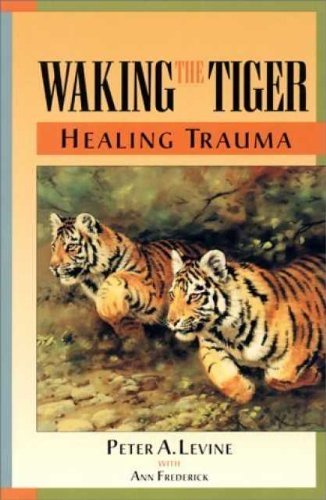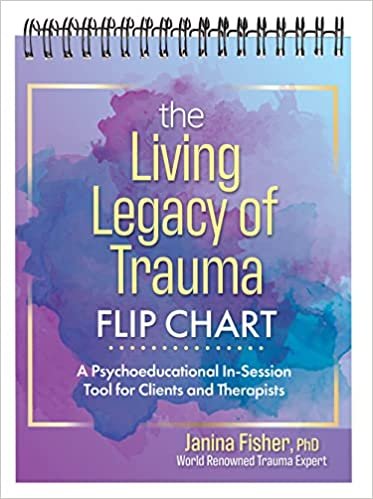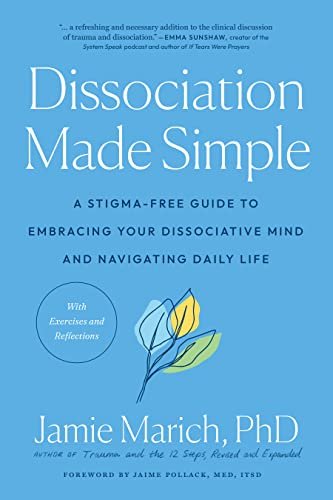Recommended Reading on Developmental Trauma
Listed below are a number of books and resources I reccomend to read if you are interested in learning about complex trauma.
Please go gently if reading these books, although knowledge is power, this can also bring up mixed feelings and emotions, and its totally ok to pause if you need to. These books can be purchased through Amazon, as an Amazon Associate I earn from qualifying purchases.
In this groundbreaking book, a leading clinical psychiatrist redefines how we think about and treat victims of trauma. A "stunning achievement" that remains a "classic for our generation." (Bessel van der Kolk, M.D., author of The Body Keeps the Score).
Trauma and Recovery is revered as the seminal text on understanding trauma survivors. By placing individual experience in a broader political frame, Harvard psychiatrist Judith Herman argues that psychological trauma is inseparable from its social and political context. Drawing on her own research on incest, as well as a vast literature on combat veterans and victims of political terror, she shows surprising parallels between private horrors like child abuse and public horrors like war.
Hailed by the New York Times as "one of the most important psychiatry works to be published since Freud," Trauma and Recovery is essential reading for anyone who seeks to understand how we heal and are healed.
Part manifesto, part exploration of what justice truly means for survivors of trauma and abuse, Judith Herman forces us to reconsider our perspective on victims, revealing uncomfortable truths about our justice systems and proposing new ways to implement justice. A follow-up to the bestselling Trauma and Recovery the book is divided into three parts, Part One :Power, examines the structure and nature of tyranny, patriarchy and white supremacy; Part Two: Visions of Justice, reveals how our current system is woefully ill-equipped for victims and corrects our misguided assumptions about what survivors need in the aftermath of violence, and finally in Part Three: Centring Survivor Justice, Herman proposes alternative methods of justice, offering hopeful new ways to think about its meanings and possibilities.
Truth and Repair is a profound and timely commentary that lies at the intersection of several cultural moments including the #MeToo movement, a resurgent interest in trauma, and the global movements focusing on racial injustices and abuses of power towards people of colour. Thoughtful, visceral and moving, Truth and Repair is a necessary call to action that invites us to envision a new approach to justice-one that centres on healing and solidarity to stand with survivors everywhere.
An essential work that centers colonial and historical trauma in a framework for healing, Decolonizing Therapy illuminates that all therapy is-and always has been- inherently political. To better understand the mental health oppression and institutional violence that exists today, we must become familiar with the root of disembodiment from our histories, homelands, and healing practices. Only then will readers see how colonial, historical, and intergenerational legacies have always played a role in the treatment of mental health.
This book is the emotional companion and guide to decolonization. It is an invitation for Eurocentrically trained clinicians to acknowledge privileged and oppressed parts while relearning what we thought we knew. Ignoring collective global trauma makes delivering effective therapy impossible; not knowing how to interrogate privilege (as a therapist, client, or both) makes healing elusive; and shying away from understanding how we as professionals may be participating in oppression is irresponsible.
Healing the Fragmented Selves of Trauma Survivors integrates a neurobiologically informed understanding of trauma, dissociation, and attachment with a practical approach to treatment, all communicated in straightforward language accessible to both client and therapist. Readers will be exposed to a model that emphasizes "resolution"―a transformation in the relationship to one’s self, replacing shame, self-loathing, and assumptions of guilt with compassionate acceptance. Its unique interventions have been adapted from a number of cutting-edge therapeutic approaches, including Sensorimotor Psychotherapy, Internal Family Systems, mindfulness-based therapies, and clinical hypnosis. Readers will close the pages of Healing the Fragmented Selves of Trauma Survivors with a solid grasp of therapeutic approaches to traumatic attachment, working with undiagnosed dissociative symptoms and disorders, integrating "right brain-to-right brain" treatment methods, and much more. Most of all, they will come away with tools for helping clients create an internal sense of safety and compassionate connection to even their most dis-owned selves.
The hidden trauma that holds back so many people.
In one way or another, we all carry trauma. It can manifest as anxiety, shame, low self-esteem, over-eating, under-eating, addiction, depression, confusion, people-pleasing, under-earning, low mood, negative thinking, social anxiety, anger, brain fog and more.
Traumas, big or 'little', leave us trapped in cycles of dysfunctional behaviours, negative thoughts and difficult feelings. Yet many people are unaware they're stuck in old reactions and patterns that stem from their past traumas. Many of us are wary of the word and push it away instead of moving towards it and learning how to break free.
Dr Sarah Woodhouse is a Research Psychologist who specialises in trauma and is passionate about helping people face this word and their past. In You're Not Broken she teaches you what a trauma is (it's probably not what you think), and how to recognise when, why and how your past is holding you back. She gently explains the pitfalls of ignoring awkward, upsetting episodes and how true freedom comes from looking back at your past with honesty. Then, sharing the latest research-based techniques and her own personal experience, she guides you towards breaking the trauma loop, reawakening your true self and reclaiming your future.
Letting Go of Self-Destructive Behaviors offers inspiring, hopeful, creative resources for the millions of male and female adolescents and adults who struggle with eating disorders, addictions, any form of self-mutilation. It is also a workbook for the clinicians who treat them. Using journaling exercises, drawing and collaging prompts, guided imagery, visualizations, and other behavioral techniques, readers will learn how to understand, compassionately work with, and heal from their behaviors rather than distracting from or fighting against them, which can dramatically reduce internal conflict and instill genuine hope. Techniques are provided in easy-to-follow exercises that focus on calming the body, containing overwhelming emotions, managing negative and distorted thoughts, re-grounding from flashbacks, addressing tension and anxiety, decreasing a sense of vulnerability, strengthening assertiveness and communication skills, and accessing inner wisdom.
This workbook can be used in conjunction with Treating Self-Destructive Behaviors in Trauma Survivors, 2nd ed, also by Lisa Ferentz, to allow therapists and their clients to approach the behaviors from the same strengths-based perspective. Workbook exercises can be completed as homework assignments or as part of a therapy session. In either case, the client is given the opportunity to process their work and share their insights with a compassionate witness and trained professional, making the healing journey even safer and more rewarding.
A world expert presents a sympathetic exploration of the causes of trauma and the new treatments making it possible for sufferers to reclaim their lives
What causes people to continually relive what they most want to forget, and what treatments could help restore them to a life with purpose and joy? Here, Dr Bessel van der Kolk offers a new paradigm for effectively treating traumatic stress.
Neither talking nor drug therapies have proven entirely satisfactory. With stories of his own work and those of specialists around the globe, The Body Keeps the Score sheds new light on the routes away from trauma - which lie in the regulation and syncing of body and mind, using sport, drama, yoga, mindfulness, meditation and other routes to equilibrium.
A vital, transformative study of the damage caused by racism from the perspective of trauma and body-centred psychology
The consequences of racism can be found in our bodies - in skin and sinew, in bone and blood. In this ground-breaking work, therapist Resmaa Menakem examines the damage, the physical consequences of discrimination, from the perspective of body-centred psychology. He argues that until we learn to heal and overcome the generational anguish of white supremacy, we will all continue to bear its scars.
My Grandmother's Hands is an extraordinary call to action for all of us to recognize that racism affects not only the mind, but also the body, and introduces an alternative view of what we can do to grow beyond our racial divides.
'A revolutionary work of beauty, brilliance, compassion and ultimately, hope . . . I believe this book will change the direction of the movement for racial justice' Robin DiAngelo, author of White Fragility'
Is there some part of yourself that you wish would go away? Most of us would say yes, whether we call it addiction, the inner critic, “monkey mind,” neurosis, sinfulness, bad habits, or some other disparaging name. Yet what if there were a different way to approach these aspects of yourself that leads to true healing instead of constant inner struggle? With No Bad Parts, Dr. Richard Schwartz teaches a revolutionary paradigm of understanding and relating with ourselves―a method that brings us into inner harmony, enhances self-compassion, and opens the doors to spiritual awakening.
Dr. Schwartz is the creator of Internal Family Systems (IFS), a paradigm-changing model of consciousness that has been transforming psychology for decades. Here, you’ll learn why IFS has been so effective in areas such as trauma recovery, addiction therapy, depression, and more. IFS overturns the idea that we have one “true” identity and recognizes that having multiple parts is not a pathology, but a normal and healthy function of the human mind. Dr. Schwartz shares insights and practices to help you recognize your own “inner family” of parts, understand how each part seeks to help and protect you even when it seems problematic, engage in inner dialogue to restore balance and self-love―and deepen your awareness of the higher Self that holds and encompasses every facet of your diverse consciousness.
Borderline, Narcissistic, and Schizoid Adaptations demystifies the diagnosis and treatment of personality disorders. It offers clear and practical advice on how to differentiate and treat clients who have made Borderline, Narcissistic, or Schizoid adaptations. Elinor Greenberg begins with an overview of the topic of personality disorders, reframes these disorders as adaptations, and then explains the treatment interventions that work best for each type of adaptation. Later chapters describe how to do specific interventions that deal with commonly encountered treatment issues such as: such as: “How to undo a Narcissistic shame-based self-hating depression,” “How to judge a Schizoid client’s sense of interpersonal safety from their dreams,” and “How to help Borderline clients reach their goals.” Each type of intervention is explained in detail, ample clinical examples are given, as is how and when to utilize the method in the client’s treatment. Both beginning therapists and experienced clinicians alike will find this book a useful resource that will expand their understanding and effectiveness with this often challenging group of clients.
Taking Your Life Back When Someone You Care About Has Borderline Personality Disorder
Do you feel manipulated, controlled, or lied to? Are you the focus of intense, violent, and irrational rages? Do you feel you are "walking on eggshells" to avoid the next confrontation? If the answer is yes, someone you care about may have borderline personality disorder (BPD) - a mood disorder that causes negative self-image, emotional instability, and difficulty with interpersonal relationships.
Stop Walking on Eggshells has already helped more than a million people with friends and family members suffering from BPD understand this difficult disorder, set boundaries, and help their loved ones stop relying on dangerous BPD behaviors. This fully revised third edition has been updated with the very latest BPD research on comorbidity, extensive new information about narcissistic personality disorder (NPD), the effectiveness of schema therapy, and coping and communication skills you can use to stabilize your relationship with the BPD or NPD sufferer in your life. This compassionate guide will enable you to:
Make sense out of the chaos
Stand up for yourself and assert your needs
Defuse arguments and conflicts
Protect yourself and others from violent behavior
This informative guide helps you identify and heal from childhood emotional neglect so you can be more connected and emotionally present in your life
Do you sometimes feel like you’re just going through the motions in life? Do you often act like you’re fine when you secretly feel lonely and disconnected? Perhaps you have a good life and yet somehow it’s not enough to make you happy. Or perhaps you drink too much, eat too much, or risk too much in an attempt to feel something good. If so, you are not alone—and you may be suffering from emotional neglect.
A practicing psychologist for more than twenty years, Jonice Webb has successfully treated numerous patients who come to her believing that something is missing inside them. While many self-help books deal with what happened to you as a child, in Running on Empty, Webb addresses the things that may not have happened for you. What goes unsaid—or what cannot be remembered—can have profound consequences that may be affecting you to this day.
Running on Empty will help you understand your experiences and give you clear strategies for healing. It also includes a special chapter for mental health professionals.
When The Polyvagal Theory was published in 2011, it took the therapeutic world by storm, bringing Stephen Porges’s insights about the autonomic nervous system to a clinical audience interested in understanding trauma, anxiety, depression and other mental health issues. The book made accessible to clinicians and other professionals a polyvagal perspective that provided new concepts and insights for understanding human behavior. The perspective placed an emphasis on the important link between psychological experiences and physical manifestations in the body. That book was brilliant but also quite challenging to read for some.
Since publication of that book, Stephen Porges has been urged to make these ideas more accessible and The Pocket Guide to the Polyvagal Theory is the result. Constructs and concepts embedded in polyvagal theory are explained conversationally in The Pocket Guide and there is an introductory chapter which discusses the science and the scientific culture in which polyvagal theory was originally developed. Publication of this work enables Stephen Porges to expand the meaning and clinical relevance of this groundbreaking theory.
A “courageous, compassionate, and rigorous every-person’s guide” (Christina Bethell, PhD, Johns Hopkins Bloomberg School of Public Health) that shows the link between Adverse Childhood Experiences (ACEs) and diseases, and how to cope and heal from these emotional traumas.
Your biography becomes your biology. The emotional trauma we suffer as children not only shapes our emotional lives as adults, but it also affects our physical health, longevity, and overall well-being. Scientists now know on a bio-chemical level exactly how parents’ chronic fights, divorce, death in the family, being bullied or hazed, and growing up with a hypercritical, alcoholic, or mentally ill parent can leave permanent, physical “fingerprints” on our brains.
When children encounter sudden or chronic adversity, stress hormones cause powerful changes in the body, altering the body’s chemistry. The developing immune system and brain react to this chemical barrage by permanently resetting children’s stress response to “high,” which in turn can have a devastating impact on their mental and physical health as they grow up.
Donna Jackson Nakazawa shares stories from people who have recognized and overcome their adverse experiences, shows why some children are more immune to stress than others, and explains why women are at particular risk. “Groundbreaking” (Tara Brach, PhD, author of Radical Acceptance) in its research, inspiring in its clarity, Childhood Disrupted explains how you can reset your biology—and help your loved ones find ways to heal. “A truly important gift of understanding—illuminates the heartbreaking costs of childhood trauma and like good medicine offers the promising science of healing and prevention” (Jack Kornfield, author of A Path With Heart).
This book offers therapists an integrated approach to adding a polyvagal foundation to their work with clients. With clear explanations of the organizing principles of Polyvagal Theory, this complex theory is translated into clinician and client-friendly language. Using a unique autonomic mapping process along with worksheets designed to effectively track autonomic response patterns, this book presents practical ways to work with clients' experiences of connection. Through exercises that have been specifically created to engage the regulating capacities of the ventral vagal system, therapists are given tools to help clients reshape their autonomic nervous systems.
Adding a polyvagal perspective to clinical practice draws the autonomic nervous system directly into the work of therapy, helping clients re-pattern their nervous systems, build capacities for regulation, and create autonomic pathways of safety and connection. With chapters that build confidence in understanding Polyvagal Theory, chapters that introduce worksheets for mapping, tracking, and practices for re-patterning, as well as a series of autonomic meditations, this book offers therapists a guide to practicing polyvagal-informed therapy.
The Polyvagal Theory in Therapy is essential reading for therapists who work with trauma and those who seek an easy and accessible way of understanding the significance that Polyvagal Theory has to clinical work.
From elementary schools to psychotherapy offices, mindfulness meditation is an increasingly mainstream practice. At the same time, trauma remains a fact of life: the majority of us will experience a traumatic event in our lifetime and up to 20% of us will develop posttraumatic stress. This means that anywhere mindfulness is being practised, someone in the room is likely to be struggling with trauma.
At first glance, this appears to be a good thing: trauma creates stress and mindfulness is a proven tool for reducing it. But the reality is not so simple.
Drawing on a decade of research and clinical experience, psychotherapist and educator David Treleaven shows that mindfulness meditation—practised without an awareness of trauma—can exacerbate symptoms of traumatic stress. Instructed to pay close, sustained attention to their inner world, survivors can experience flashbacks, dissociation and even retraumatisation.
This raises a crucial question for mindfulness teachers, trauma professionals and survivors everywhere: How can we minimise the potential dangers of mindfulness for survivors while leveraging its powerful benefits?Trauma-Sensitive Mindfulness offers answers to this question.
Something is missing in your life. So, you go to a store and buy what you need. You get the flat-packed furniture home, open it up and spread the pieces out on the floor.
But there’s no instructions. That is your life. This book is the instructions.
You have everything you need. It’s there on the floor. Getting it to work together in a way which actually solves the problem you started your day with is a huge challenge.
You ask friends. Each of them has a different opinion. You try it their ways. Sometimes you get close. But it’s not right. You laugh at your failures. The problem remains.
A family member drops by. She knows what you should do. You try that too. That doesn’t work either. Which makes you annoyed and frustrated. You tell her to go away.
You sit alone, baffled, frustrated. Lost. Still trying to solve the problem. Still with everything you need spread out on your sitting room floor.
Then a stranger rings your doorbell. He gives you something. It tells you how it works. It is the instructions. You put your furniture together and set it up in the house. The problem is solved. You clear away the mess.
Now everything is better. It’s hard to remember what was missing before, or the confusion you had to deal with.
I am that stranger.
These are the instructions.
Life is stressful, anxiety provoking, and frequently traumatic. The result is that many of us are hurting, and often we are unaware of how deep our pain runs. These experiences aren't simply over and done with once they have passed. They each leave their mark, etched deep into both the psyche and the body. This affects how well we function from this point onwards. The Revolutionary Trauma Release Process shows what stress, anxiety, and trauma do to our mental wellbeing and physical health. Despite the uffering we experience in life, Dr. Berceli argues that even the most damaging events can become a pathay to a more fulfilling and meaningful life. The magic of The Revolutionary Trauma Release Processis that it can be utilized by anyone, any place on the planet. The process can reestablish a person's equilibrium, stabilize their life, and turn them to an emotionally healthy place.
The work of the mature person is to carry grief in one hand and gratitude in the other and be stretched large by them.
Noted psychotherapist Francis Weller provides an essential guide for navigating the deep waters of sorrow and loss in this lyrical yet practical handbook for mastering the art of grieving. Describing how Western patterns of amnesia and anesthesia affect our capacity to cope with personal and collective sorrows, Weller reveals the new vitality we may encounter when we welcome, rather than fear, the pain of loss. Through moving personal stories, poetry, and insightful reflections he leads us into the central energy of sorrow, and to the profound healing and heightened communion with each other and our planet that reside alongside it.
The Wild Edge of Sorrow explains that grief has always been communal and illustrates how we need the healing touch of others, an atmosphere of compassion, and the comfort of ritual in order to fully metabolize our grief. Weller describes how we often hide our pain from the world, wrapping it in a secret mantle of shame. This causes sorrow to linger unexpressed in our bodies, weighing us down and pulling us into the territory of depression and death. We have come to fear grief and feel too alone to face an encounter with the powerful energies of sorrow.
Those who work with people in grief, who have experienced the loss of a loved one, who mourn the ongoing destruction of our planet, or who suffer the accumulated traumas of a lifetime will appreciate the discussion of obstacles to successful grief work such as privatized pain, lack of communal rituals, a pervasive feeling of fear, and a culturally restrictive range of emotion. Weller highlights the intimate bond between grief and gratitude, sorrow and intimacy. In addition to showing us that the greatest gifts are often hidden in the things we avoid, he offers powerful tools and rituals and a list of resources to help us transform grief into a force that allows us to live and love more fully.
Nature's Lessons in Healing Trauma...Waking the Tiger offers a new and hopeful vision of trauma. It views the human animal as a unique being, endowed with an instinctual capacity. It asks and answers an intriguing question- why are animals in the wild, though threatened routinely, rarely traumatized? By understanding the dynamics that make wild animals virtually immune to traumatic symptoms, the mystery of human trauma is revealed.Waking the Tiger normalizes the symptoms of trauma and the steps needed to heal them. People are often traumatized by seemingly ordinary experiences. The reader is taken on a guided tour of the subtle, yet powerful impulses that govern our responses to overwhelming life events. To do this, it employs a series of exercises that help us focus on bodily sensations. Through heightened awareness of these sensations trauma can be healed.
Resources for Therapists & Clients
Help your clients make sense of their most puzzling and shameful trauma symptoms with the innovative use of simple diagrams and explanations found in The Living Legacy of Trauma Flip Chart.
Traumatized individuals often have trouble processing words and information, but visual images draw their attention, allow them to better understand their symptoms or struggles, and help them to engage more easily in treatment. Created by Janina Fisher, PhD, this flip chart makes psychoeducation a relational experience in which the client can feel understood and supported. It presents scientific information in an accessible, easy-to-understand manner that builds trust, even in the early stages of therapy, and allows trauma survivors to feel more empowered rather than victimized by their symptoms. Your clients will thank you for using it!
Traumatic experiences leave a “living legacy” of effects that often persist for years and decades after the events are over. Historically, it has always been assumed that retelling the story of what happened would resolve these effects.
However, survivors report a different experience: Telling and re-telling the story of what happened to them often reactivates their trauma responses, overwhelming them rather than resolving the trauma. To transform traumatic experiences, survivors need to understand their symptoms and reactions as normal responses to abnormal events. They need ways to work with the symptoms that intrude on their daily activities, preventing a life beyond trauma.
Dr. Janina Fisher, international expert on trauma, has spent over 40 years working with survivors, helping them to navigate their journey. In Transforming the Living Legacy of Trauma, she shows how the legacy of symptoms helped them survive and offers:
Step-by-step strategies that can be used on their own or in collaboration with a therapist
Simple diagrams that make sense of the confusing feelings and physical reactions survivors experience
Worksheets to practice the skills that bring relief and ultimately rejuvenation
Trauma’s living legacy affects every aspect of life, often in ways that have no obvious connection to the trauma itself. Feeling “crazy,” defective, fearful, and overwhelmed, survivors cope as best they can, but without an understanding of what’s happening to them, their confidence erodes.
The Living Legacy of Trauma Card Deck can be a friend and mentor on your journey to trauma recovery. Based on Dr. Janina Fisher’s 40 years of experience as an international trauma expert, these cards are filled with encouragement, inspiration, and practical tips to inspire you to keep going when you are feeling down, hopeless, self-blaming, confused, and anxious―no matter how hard it gets.
Therapists around the world ask similar questions and struggle with similar challenges treating highly dissociative patients. This book arose not only out of countless hours of treating patients with dissociative disorders, but also out of the crucible of supervision and consultation, where therapists bring their most urgent questions, needs and vulnerabilities.
The book offers an overview of the neuropsychology of dissociation as a disorder of non-realisation, as well as chapters on assessment, prognosis, case formulation, treatment planning, and treatment phases and goals, based on best practices. The authors describe what to focus on first in a complex therapy and how to do it; how to help patients establish both internal and external safety without rescuing; how to work systematically with dissociative parts of a patient in ways that facilitate integration rather than further dissociation; how to set and maintain helpful boundaries; specific ways to stay focused on process instead of content; how to deal compassionately and effectively with disorganised attachment and dependency on the therapist; how to help patients integrate traumatic memories; what to do when the patient is enraged, chronically ashamed, avoidant or unable to trust the therapist; and how to compassionately understand and work with resistances as a co-creation of both patient and therapist.
Relational ways of being with the patient are the backbone of treatment and are themselves essential therapeutic interventions. As such, the book also focuses not only on highly practical and theoretically sound interventions, not only on what to do and say, but places strong emphasis on how to be with patients, describing innovative, compassionately collaborative approaches based on the latest research on attachment and evolutionary psychology.
Guided by clinical counselor Jamie Marich-a trauma-informed clinician living with a dissociative disorder herself-this book tells you everything you need to know about dissociation...but were too afraid to ask.
Here, you'll learn-
What dissociation is-and why it's a natural response to traumaHow to understand and work with your "parts"-the unique emotional and behavioral profiles that can develop from personality fragmentationThere's nothing shameful about dissociating-that, in fact, we can all dissociateSkills and strategies for living your best, authentic, and most fulfilled lifeWhat to look for in a therapist- choosing a healer who sees you and gets itFoundational elements of healing from trauma, including PTSD and C-PTSD With practical guided exercises like "The Dissociative Profile" and "Parts Mapping," this book is written for those diagnosed with dissociative disorders, clinicians and therapists who treat trauma and dissociation, and readers who are exploring whether they may have dissociative symptoms or a condition like dissociative identity disorder (DID). Dissociation Made Simple breaks it all down accessibly and comprehensively, with empowerment and support-and without stigma, judgment, or shame.
The body's intelligence is largely an untapped resource in psychotherapy, yet the story told by the "somatic narrative"-- gesture, posture, prosody, facial expressions, eye gaze, and movement -- is arguably more significant than the story told by the words. The language of the body communicates implicit meanings and reveals the legacy of trauma and of early or forgotten dynamics with attachment figures. To omit the body as a target of therapeutic action is an unfortunate oversight that deprives clients of a vital avenue of self-knowledge and change.
Written for therapists and clients to explore together in therapy, this book is a practical guide to the language of the body. It begins with a section that orients therapists and clients to the volume and how to use it, followed by an overview of the role of the brain and the use of mindfulness. The last three sections are organized according to a phase approach to therapy, focusing first on developing personal resources, particularly somatic ones; second on utilizing a bottom-up, somatic approach to memory; and third on exploring the impact of attachment on procedural learning, emotional biases, and cognitive distortions. Each chapter is accompanied by a guide to help therapists apply the chapter's teachings in clinical practice and by worksheets to help clients integrate the material on a personal level.
The concepts, interventions, and worksheets introduced in this book are designed as an adjunct to, and in support of, other methods of treatment rather than as a stand-alone treatment or manualized approach.
By drawing on the therapeutic relationship and adjusting interventions to the particular needs of each client, thoughtful attention to what is being spoken beneath the words through the body can heighten the intimacy of the therapist/client journey and help change take place more easily in the hidden recesses of the self.
Encompassing the contributions of expert clinicians and researchers in the area of traumatic stress and dissociation, this volume is the first to integrate current neuroscience research regarding traumatic dissociation with several cutting-edge approaches to treatment, providing a comprehensive, neurobiologically based treatment approach. The text discusses current neuroscientific research regarding traumatic stress and dissociation that includes attachment, affective neuroscience, polyvagal theory, structural dissociation, and information processing theory, yielding a comprehensive model that guides treatment and clinical interventions for traumatic dissociation. It then integrates this model with stage-oriented treatment and current therapeutic interventions, including EMDR, somatic and body psychotherapy approaches, Ego State Therapy, and adjunctive pharmacological interventions. Readers are given hands-on practical guidance regarding clinical decision making, enabling them to make sound choices about interventions that will facilitate optimal treatment outcomes
When clients are stuck in the cognitive experience of their story, an explanation of polyvagal theory helps to bring their attention to the autonomic experience— to bring the importance of the biology of their experience back into awareness. Yet polyvagal theory can be challenging and intimidating to explain.
This flip chart offers therapists an easy, standardized way to support clients in understanding the role of the autonomic nervous system in their lives. Using a flip chart makes psycho- education an interactive experience. Therapists can feel confident in teaching their clients polyvagal theory by following the chart.
With a flip chart visible during sessions, the therapist can:
remind clients of the ways the autonomic nervous system has been shaped and is active in their daily living experience,
display a page corresponding to the present moment, thus anchoring that experience in the theory,
keep a page of the hierarchy visible when working with a client's habitual response pattern.

